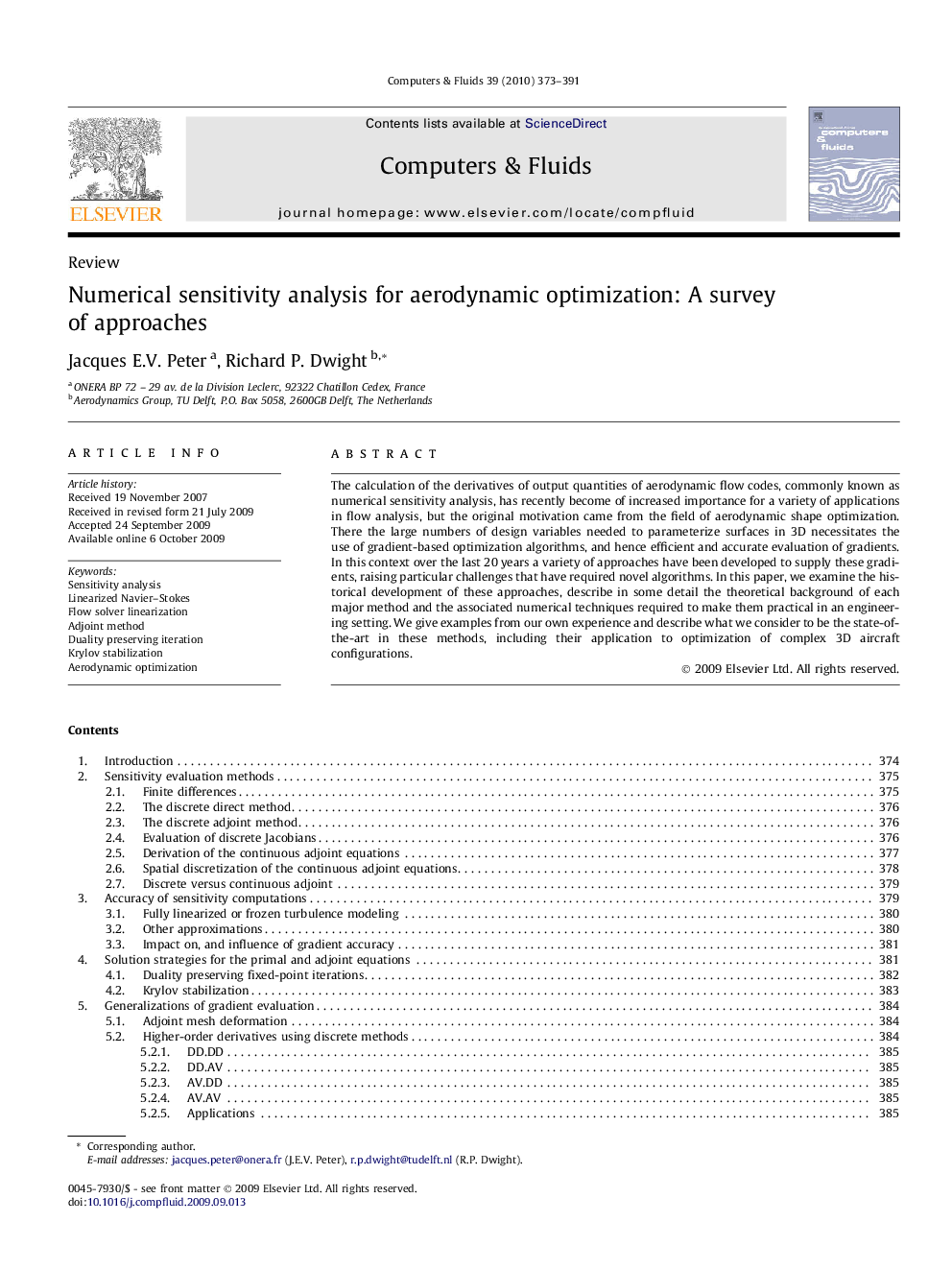| Article ID | Journal | Published Year | Pages | File Type |
|---|---|---|---|---|
| 769249 | Computers & Fluids | 2010 | 19 Pages |
The calculation of the derivatives of output quantities of aerodynamic flow codes, commonly known as numerical sensitivity analysis, has recently become of increased importance for a variety of applications in flow analysis, but the original motivation came from the field of aerodynamic shape optimization. There the large numbers of design variables needed to parameterize surfaces in 3D necessitates the use of gradient-based optimization algorithms, and hence efficient and accurate evaluation of gradients. In this context over the last 20 years a variety of approaches have been developed to supply these gradients, raising particular challenges that have required novel algorithms. In this paper, we examine the historical development of these approaches, describe in some detail the theoretical background of each major method and the associated numerical techniques required to make them practical in an engineering setting. We give examples from our own experience and describe what we consider to be the state-of-the-art in these methods, including their application to optimization of complex 3D aircraft configurations.
